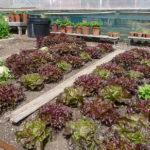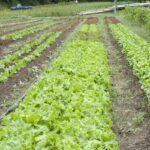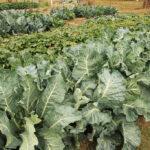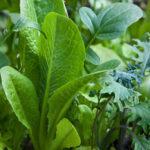Are you looking to grow fresh, healthy greens in your own food garden? Growing greens is not only a fulfilling hobby, but it also helps you save money and have control over what goes into your food. Greens are a great choice for your food garden, as they are easy to grow, fast-growing, and packed with nutrients. Additionally, with the right techniques, you can extend their growing season and enjoy fresh greens all year round.
Choose the Right Greens

When it comes to growing greens, there are many different options to choose from, such as lettuce, spinach, kale, collards, Swiss chard, and more. Each green has its own growing requirements, so make sure you choose the right variety for your climate and growing conditions. Some greens, such as lettuce, do best in cooler temperatures, while others, such as kale, can withstand more heat.
Provide Adequate Sunlight
Greens need at least 6–8 hours of sunlight per day to grow properly. Make sure you choose a location in your garden that gets plenty of sunlight and avoid shady areas. If you live in a hot climate, you can also provide some shade during the hottest part of the day to prevent the greens from bolting or becoming bitter.
Keep the Soil Moist
Greens need consistently moist soil to grow well. Water your greens deeply once or twice a week, making sure the water reaches the roots. In hot climates, you may need to water more frequently. To conserve moisture, you can add a layer of mulch on top of the soil.
Fertilize Regularly
Greens are heavy feeders, so they need regular fertilization to grow well. You can use a balanced fertilizer, such as a 10–10-10, or an organic fertilizer, such as compost or fish emulsion. Fertilize your greens every 2–4 weeks, following the instructions on the label.
Thin Your Greens
Thinning your greens means removing some of the seedlings to give the remaining plants more room to grow. This helps improve air circulation, prevent disease, and encourage stronger growth. Thin your greens when they are about 2–3 inches tall, leaving about 6–8 inches between each plant.
Protect Your Greens from Pests
Greens are susceptible to pests, such as aphids, slugs, and caterpillars. To protect your greens, you can use physical barriers, such as row covers, or organic pest control methods, such as neem oil or diatomaceous earth.
Extend the Growing Season
To extend the growing season, you can use a variety of techniques, such as starting seeds indoors, using row covers, and planting cool-season greens in the fall. Additionally, you can use low tunnels or high tunnels to create a microclimate in your garden, allow growing greens all year round.
By following these tips, you can grow healthy, delicious greens in your food garden and extend their growing season, maximizing your garden’s harvest.
Keywords: food garden, greens, growing season, harvest, sunlight, soil, fertilize, pests, low tunnels, high tunnels, row covers, growing greens, tips for growing greens, growing greens in your garden, growing greens for health
Check out our Novel Writing Workbooks
Check out Little Tree Food Forest for articles on food forests and homesteading.
Check out FoodieScapes for articles on growing, fermenting and preserving food
Check out StoryScapes.World for articles on writing.











